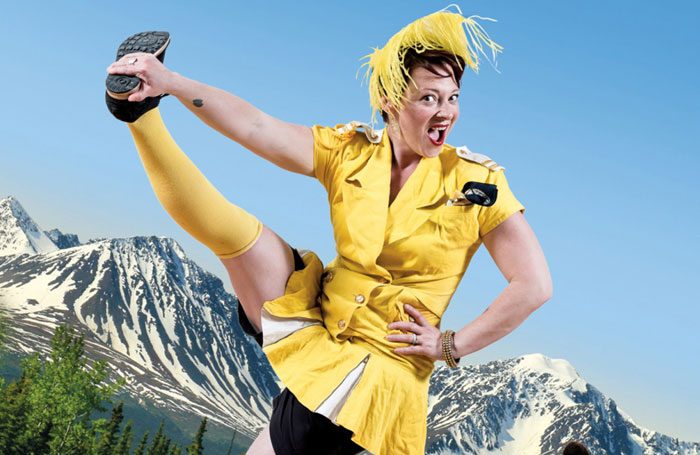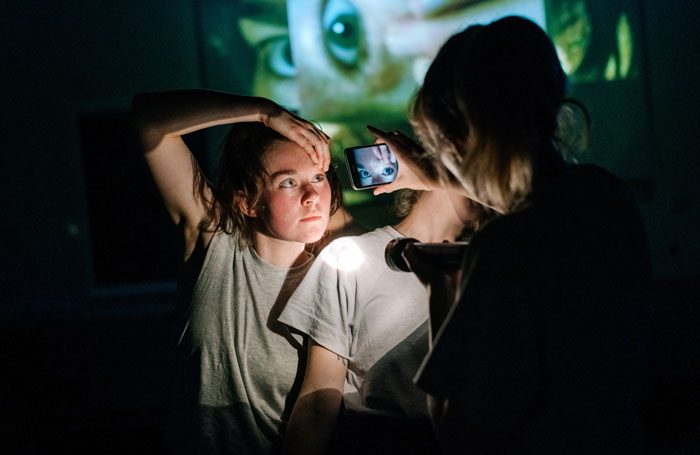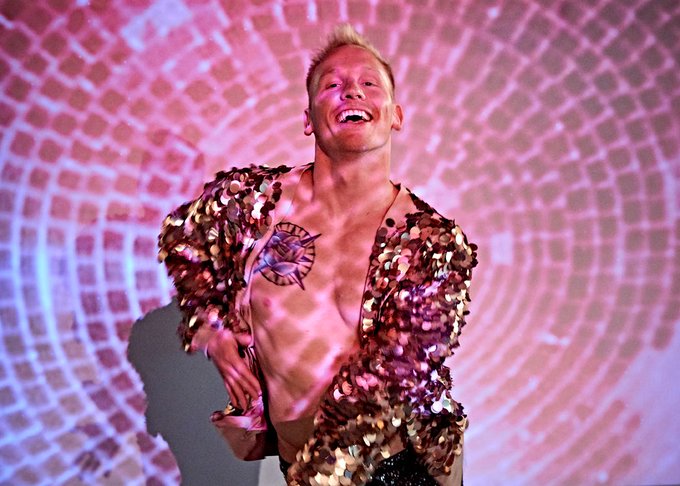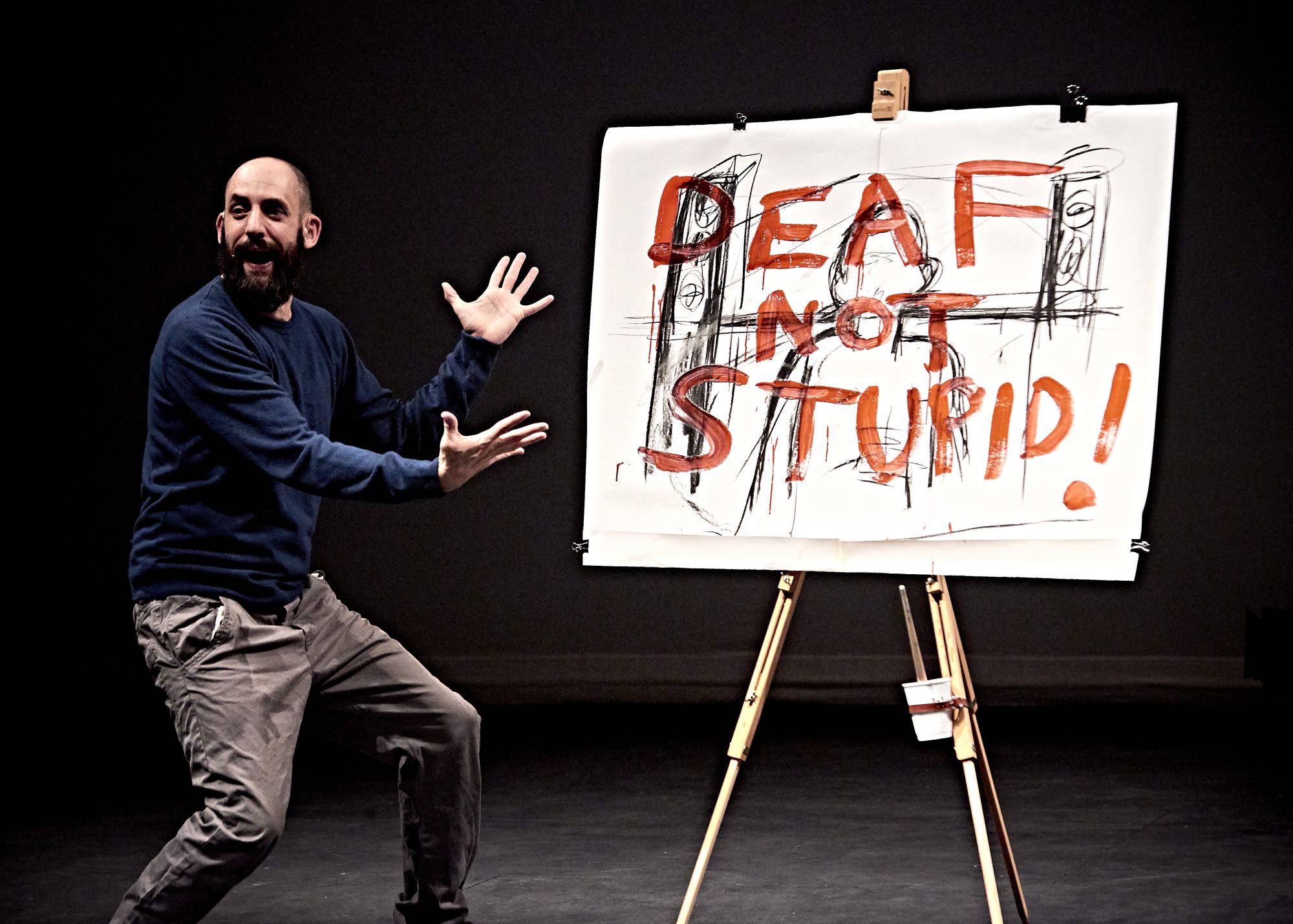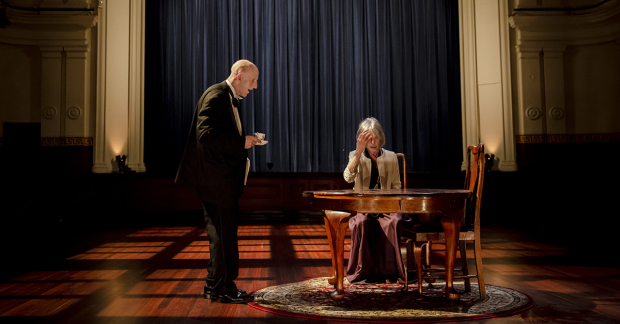A woman laden with a giant rucksack enters the space. Her movement is slow, careful, as if she is walking through a snowstorm. She is wearing a giant coat with a large hood, her boots look warm and the rucksack on her back feels heavy. She waves a flag! She plants it on the ground and acknowledges the land.
This is the third show at this year’s Edinburgh Fringe in which I am witness to the acknowledging of the land, but not the land we stand on right now – instead, a land far away, a land unknown to me, a land whose cultural history is not my own. And yet, with that acknowledgment comes a great sense of knowledge of what has been, and how this moment in time relates to the bigger narrative, the lineage of time and history, and of the things we like to remember and the things we try to brush under the carpet.
So, from that moment on I am with the woman with the big heavy boots, laden by weight, re-staking a land. Her land, her past, her heritage!
Yukon Ho! (Tall Tales from the Great White North) is a beautifully complex work about grief, home and Can-Can dancing. It is also about survival and about death. It is human and raw, funny and melancholic. It is like life – a tale of those who survive, and those who don’t. A tale of hope, and seeking a better future. A migrant tale of what it is to cut roots off and try and replant in another place.
It takes me a little while to begin to follow the layered narratives. Narratives so sweet and narratives so bitter.
A story of drinking 22 shots between dancing the Can-Can in different bars
A story of how to fight a bear
A story of losing a friend, and then another, and another
A story of being an ex-Yukoner and how that feels
A story of survival skills, many survival skills
A drinking story, and another but this time for real – next to me is a chopped toe in a shot of alcohol. Of course there is, it’s the Yukon in Edinburgh, in August, in 2019.
And all these little stories, all of them full of heart and socio-political contexts, all of them stack up to a piece so beautiful and poignant right now – a migrant’s tale in a fractured land (Britain); a show about survival. And all the survival skills we are taught with humour and delight don’t and can’t prepare us for a much bigger sense in which a survival skills of how to deal with loss is the stuff that no-one teaches you and nothing can prepare you for. There is no medicine for it, there is just time for healing.
And so this work slowly and persistently gets under my skin and breaks me so gently to sob like a little girl for those I have left behind; for all the people and places I will never see – and how they, with their beauty and tardiness have moulded me.
And so I go back to the land, to the acknowledging of the land – with its history and its nature and the things it takes from us and all the incredible memories it gives us.

